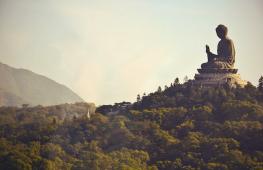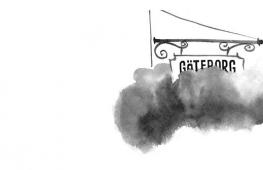Victoria falls The largest waterfall, rivers in Africa The largest waterfall in Africa
Moreover, most of them are concentrated in South Africa (the Kingdom alone boasts 3,000 waterfalls).
Victoria Falls
Those who come here (Victoria has a height of more than 100, and a width of about 1800 m), will be able to jump on a rubber rope from the highest point of the waterfall or canoe or kayak on the Zambezi, go on a walking or auto safari in the national park, as well as visit museum (exhibits will "tell" about the history of the waterfall).
Those who wish will be able to admire Victoria on a helicopter tour over the waterfall, while cruising along the Zambezi River, from the railway bridge, or after lifting any of the numerous observation decks equipped in Victoria Falls National Park (entrance costs $ 10).
Location - on the border and. The visit will cost $ 20.
Tugela waterfall
It is represented by a 5-step cascade (maximum height - more than 400 m, width - 15 m), and you can get here by choosing one of 2 trails: the path along the first route will take 5 hours, and along the second - the whole day. In any case, the journey will be accompanied by spectacular views and climbing steep mountains (metal stairs are provided for climbing).
Address: Natal National Park,.
Congu Falls
Kongu are the most beautiful waterfalls in Central Africa: their waters fall from a height of 56 meters, and the total width of successively located cascades reaches 3 km. They are located at a distance from tourist routes, so it will be possible to go on an excursion to them from Makoku, where hotels are open for tourists.
Address: Congu National Park, Gabon.
Blue Nile Falls
They are represented by several small cascades, which are located at the foot of a large waterfall (its width ranges from 100-400 m, and its height - 37-45 m).
Ethiopia, near the village of Tis Abbay; visit cost - 20 birr.
Boyoma Falls
In terms of water consumption (17,000 cubic meters / sec), they are included in the Guinness Book of Records. The waterfalls have 7 rapids (they are separated by stretches) and stretch for 150 km.
Victoria Falls is famous all over the world and constantly attracts a huge number of tourists from all over the world. It is the largest waterfall in Africa. Locals call him "Mosi-oa-Tunya", which means "Thundering smoke". Victoria is one of the most significant and unique sights on the African continent.
The territory of the waterfall belongs to two countries at the same time - Zambia and Zimbabwe. To understand where Victoria Falls is, you need to look at where the border between the two states lies. It divides the countries directly along the channel of the Zambezi River, passing through the territory of the waterfall.
The history of the name of Victoria Falls
This waterfall got its name thanks to the English discoverer and traveler David Livingston. He was also the first white person to see the incredible sight of a waterfall in 1885. The locals took the explorer to the highest waterfall in Africa. David Livingston was so fascinated and amazed by the view that he immediately christened the waterfall in honor of the Queen of England.
Victoria Falls geographyIn fact, Victoria Falls is not the tallest waterfall in the world. The laurels of the highest water flow went to the waterfall (979 m). But the fact that the wall of water stretches for almost two kilometers makes this waterfall the widest continuous stream in the world. Victoria Falls are almost twice the height. This figure varies from 80 to 108 meters at different points in the stream. Splashes from the rapidly falling masses of water scatter over the entire territory of the natural basin formed by the waterfall and are able to rise to a height of 400 m. The fog they create and the roar of a stormy stream are visible and audible even at a distance of 50 km.
Victoria Falls is located on the Zambezi River approximately in the middle of its course. A water avalanche breaks off a cliff in the place where a wide river abruptly flows into a relatively narrow mountain crevice, which is 120 m wide.
Entertainment at Victoria FallsIn autumn, when the rainy season recedes, the water level in the river decreases markedly. During this period of time, you can take walks along a certain part of the waterfall. For the rest of the time, the waterfall is an endless powerful stream that throws 546 million liters of water every minute.
The dry season attracts many tourists to the waterfall also because it is during this period of the year that you can swim in the unique natural pool, which is called the devil's. And this is not surprising, because the "Devil's Font" at Victoria Falls is located on the very cliff. While swimming in it, you can watch the seething water streams break down from the mountain at a distance of just a few meters. This small ten-meter pool is separated from the waterfall only by a narrow cofferdam. However, when the water in the Zambezi resides again, the "Devil's Font" is closed because visiting it could pose a threat to the lives of tourists.
Also among fans of extreme sports "bungee jumping" is a popular form of entertainment. This is nothing more than zip jumping straight to the seething waters of Victoria Falls in Africa. "Bungee jumping" is carried out from the bridge located in the immediate vicinity of the waterfall. A person who wants to take a risk is put on special elastic cables and invited to step into the abyss. After free flight, almost at the very surface of the water, the cables spring and soon stop. And the fearless tourist gets a lot of new and incomparable sensations.
 |
 |
For the first time in 1855, the famous explorer D. Livingston told about the waterfall. A wide flat area stretches in front of the waterfall, and suddenly, the Zambezi makes an incredible run and jumps into the abyss for 120 meters! Having made such a dizzying leap, the Zambezi again smoothly transitions to the plain and ends its journey in Lake Kariba.
You can admire Victoria from different angles: from the air - by taking a paragliding or helicopter flight, going on a cruise on water transport along the Zambezi River, and the most daring can take a jump by doing bungee jumping. The best view of Victoria is from a small cliff in the middle of the Zambezi - Knife Point. On both sides of the waterfall, you can always see a rainbow. Once every ten years, the lucky ones can see a rare natural phenomenon - an extraordinary lunar rainbow, which chose the Victoria Falls from all places on the planet.
The tallest waterfall in the world
The Venezuelan name for the world's tallest waterfall is Angela, Kerepakupai Meru. This name was proposed in 2009 by the country's late president, eccentric Hugo Chavez, an opponent of everything American. Translated, it means "the waterfall of the deepest place."
The height of the famous waterfall is 979 meters, almost a kilometer! It is unrealistic to get to the waterfall on foot, because from all sides the approaches to it are closed by the impenetrable jungle. Due to the constant fog, it seems that geysers or volcanoes are located around the waterfall. The best view of the tallest waterfall in the world is from the air.
Despite the fact that the local Indian tribes knew about the existence of the waterfall long before the appearance of Europeans and Americans here, it became widely known only in the 30s of the 20th century. This is hard to believe, especially considering that Christopher Columbus discovered America in the 15th century. Nevertheless, the waterfall received its name - Angel, the waterfall received only in 1937, in honor of the pilot James Angel. This happened after a pilot from the United States, James Angel, along with passengers for a long 11 days, made his way through the jungle from the top of the mountain that gives rise to the waterfall. The name of this mountain, Auyantepui, in contrast to the pilot's surname, which means "angel", is translated as "devil's mountain."
Read more about Angela in the article -
Victoria Falls
There are many very beautiful places in Africa. One of them is Victoria Falls, named after the Queen of England. In 1855, this miracle was discovered by the traveler David Levingston. The sight of many tons of water falling into the abyss startled him.
The largest waterfall in Africa is about a kilometer long and 100 meters high. It is known that the Zambezi River flows over almost flat terrain, but its path is blocked by a deep canyon, into which water falls. Along the width of the river, at the very edge of the abyss, there are four islands dividing the river into streams. Each of them has its own name. These are the Devil's Falls, Rainbow, Horseshoe, Main and Eastern. This natural wonder is spectacular in March and April. The area is rainy during these months.
During the rainy season, it is difficult to see what is happening in the canyon, the water rushes down with such force that even in the air, before reaching the bottom, it turns into water dust. The clouds rise to a height of more than three hundred meters. At a distance of 40 kilometers from the waterfall, you can see the fog and hear the thunder of the water rushing into the abyss. When the rains stop, the power of the river also weakens, and when dry time comes, only a few small streams remain from the powerful stream. At this time, you can wonderfully see the riverbed and the bottom of the canyon.
Victoria Falls facts

The largest waterfall in Africa serves as the border between the two countries - Zimbabwe and Zambia, in this place are the national parks of the hot continent. Only here, on the banks of the Zambezi, there are large populations of such rare animals as hippos and giraffes. Due to the constant presence of water dust during the rainy season, tall, evergreen trees grow on the banks of the waterfall, reaching enormous sizes. Thanks to the water, these plants are preserved during the dry season, when there is not enough water in the entire area.
For a very long time, Victoria Falls has been visited by many tourists. Some come here specially to see this miracle. In 1905, a railway was built, along which you can get to the desired place. Previously, only a small number of enthusiasts got here. This waterfall is the only one in the whole world where you can admire a rare phenomenon - a lunar rainbow. This is a very rare sight, it appears only once every 15 years, during the full moon. An indispensable condition is the rainy season, when a natural phenomenon manifests itself in full force.
Locals set up an observation deck on top of a huge baobab tree. You can climb it using a special ladder. Such an adaptation does not violate the harmony of nature and at the same time makes it possible to see all the beauty of the area. Above Victoria, as the largest waterfall in Africa is called, there is a wonderful nature, forests with many species of animals grow here. Directly along the banks of the Zambezi, there are national parks, in which, in addition to giraffes and hippos, are also observed such inhabitants as elephants, antelopes and crocodiles.
A waterfall can be dangerous

It is best, of course, to look at all this splendor from a helicopter, which can hover at a fairly high altitude. This is the only way to view the waterfall as a whole. Some particularly courageous people try to get closer to the stream and photograph the river falling down from as close a distance as possible. Such behavior is dangerous and many have already paid for their frivolity with their lives, but there are new daredevils and are again at risk.
The largest waterfall in Africa is Victoria Falls, which is located on the Zambezi River. Many people come here and have an unforgettable experience. Upstream, rare animals live in national parks.
In 1855, Scottish missionary and explorer David Livingston sailed up the Zambezi River at the head of a flotilla of 33 boats and a crew of 160 Makololo natives. And so, when the expedition passed another channel, a majestic, incomparable riot of nature opened up in front of them. The largest waterfall in Africa appeared before the travelers in all its power and beauty.
Livingston wrote that in England no one can imagine even for a minute all the splendor of this miracle of nature: “No one can imagine all the beauty of the waterfall. The eyes of a Briton, and indeed of any European, have never seen such a thing, but the sight so insanely beautiful was probably admired by the angels in heaven! " The traveler named it after the then Queen Victoria of Great Britain. Since ancient times, hunters of the Batoka tribes called the waterfall Mosi-o-Tunya - "Thundering smoke", and the Matabele tribe, from the other side, called it Chongue - "Place of the rainbow".
It is one of the largest and most stunning waterfalls in the world. Of course, Victoria Falls is a fantastic sight. It appears as if from nowhere. There are no mountains or hills in the landscape. In the basalt plateau, along which the Zambezi flows, a huge crevice is formed, into which the streams of a full-flowing river break down.
The waterfall is very wide, about 1800 meters, and the height from the top point of the fall of the water varies from 80 meters to 108 meters. The water forms fog and spray that rise above 350 meters and are visible up to 40 kilometers away. During the rainy season, more than 500 million liters of water per minute pass through the waterfall.
On the edge of the abyss there are four islands that are separated by streams of water. At the right bank there is a stream "Jumping water", 35 meters high. Behind the island of Boaruk, the "Main" waterfall is about 450 meters wide. Livingstone Island separates the main channel from another "river in the river", and near the left coast the "Eastern" cascade breaks into the abyss.
The waterfall gradually recedes upstream, gnawing new channels in the basalt.
Depending on the season, the waterfall looks completely different. During the high season - March and April, it rages with all its might. But spray and constant fog make it difficult to see its splendor. As the amount of water decreases, the view of the waterfall is improved. At the “waterless” point, in November and December, the waterfall pours in scanty streams, and in some places it dries up completely. During the dry season, the cliffs are clearly visible and you can see the abyss.
The waterfall is located on the border of two states and two national parks - Victoria Falls in Zimbabwe and Thundering Smoke in Zambia. The national parks protect rich wildlife with settlements of elephants and giraffes. In the Zambezi, there is a large colony of hippos and crocodiles at the waterfall.
Before the construction of the railway to Bulawayo, the second largest city in Zimbabwe, in 1905, the waterfall was rarely visited by Europeans, today those who wish quite freely, especially through Zambia, can go to the waterfall on their own or along the developed tourist routes.
On electronic maps, Victoria Falls is visible in all its glory. Be sure to take a look, you will not regret it!



